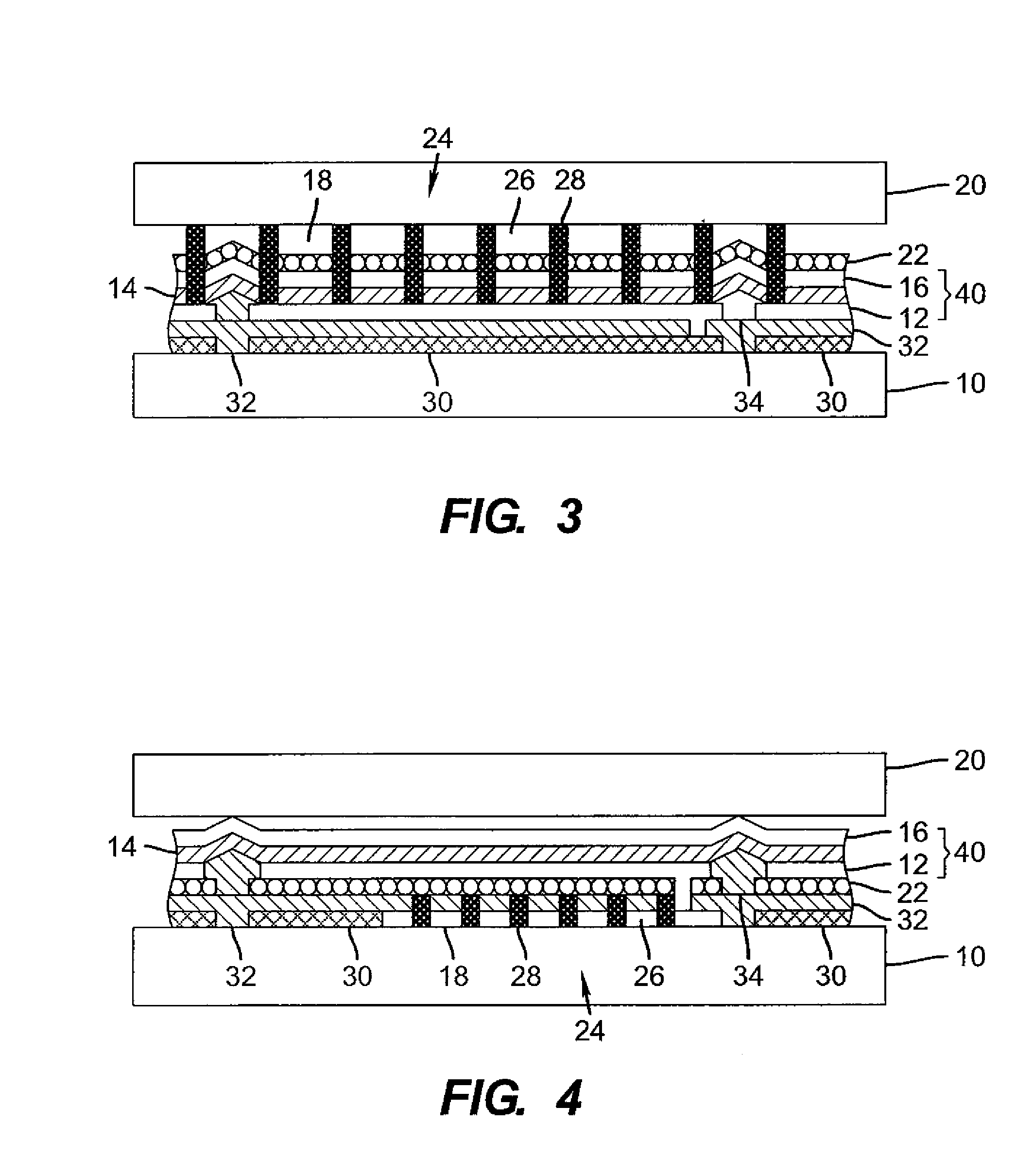OLED device having improved output and contrast with light-scattering layer and contrast-enhancement layer
a technology of light scattering layer and oled device, which is applied in the direction of discharge tube/lamp details, discharge tube luminescnet screen, incadescent envelope/vessel, etc., can solve the problems of reducing the image quality oled devices generally suffer from poor ambient contrast, and can absorb as much as 40% of the emitted light, so as to improve the light efficiency and ambient contrast of the oled device
- Summary
- Abstract
- Description
- Claims
- Application Information
AI Technical Summary
Benefits of technology
Problems solved by technology
Method used
Image
Examples
Embodiment Construction
[0036]Referring to FIG. 1, in accordance with one embodiment of the present invention, an organic light-emitting diode (OLED) device, comprises an OLED 40 formed over a substrate 10 having a first patterned electrode 12 defining independently controllable light-emitting areas 70, and a transparent second electrode 16 formed over the first electrode, wherein one or more layers 14 of light-emitting organic material are formed between the electrodes 12 and 16, the organic material layer(s) 14 having a first optical index. A transparent cover 20 is formed over the OLED 40 and has a second optical index, and light is emitted through the transparent cover 20. A light-scattering layer 22 is formed between the cover 20 and substrate 10 for scattering light. A low-index element 18 having an optical index lower than the first and second optical indices is formed between the scattering layer 22 and the transparent cover 20. A contrast-enhancement layer 24 comprising a plurality of alternating ...
PUM
 Login to View More
Login to View More Abstract
Description
Claims
Application Information
 Login to View More
Login to View More - R&D
- Intellectual Property
- Life Sciences
- Materials
- Tech Scout
- Unparalleled Data Quality
- Higher Quality Content
- 60% Fewer Hallucinations
Browse by: Latest US Patents, China's latest patents, Technical Efficacy Thesaurus, Application Domain, Technology Topic, Popular Technical Reports.
© 2025 PatSnap. All rights reserved.Legal|Privacy policy|Modern Slavery Act Transparency Statement|Sitemap|About US| Contact US: help@patsnap.com



